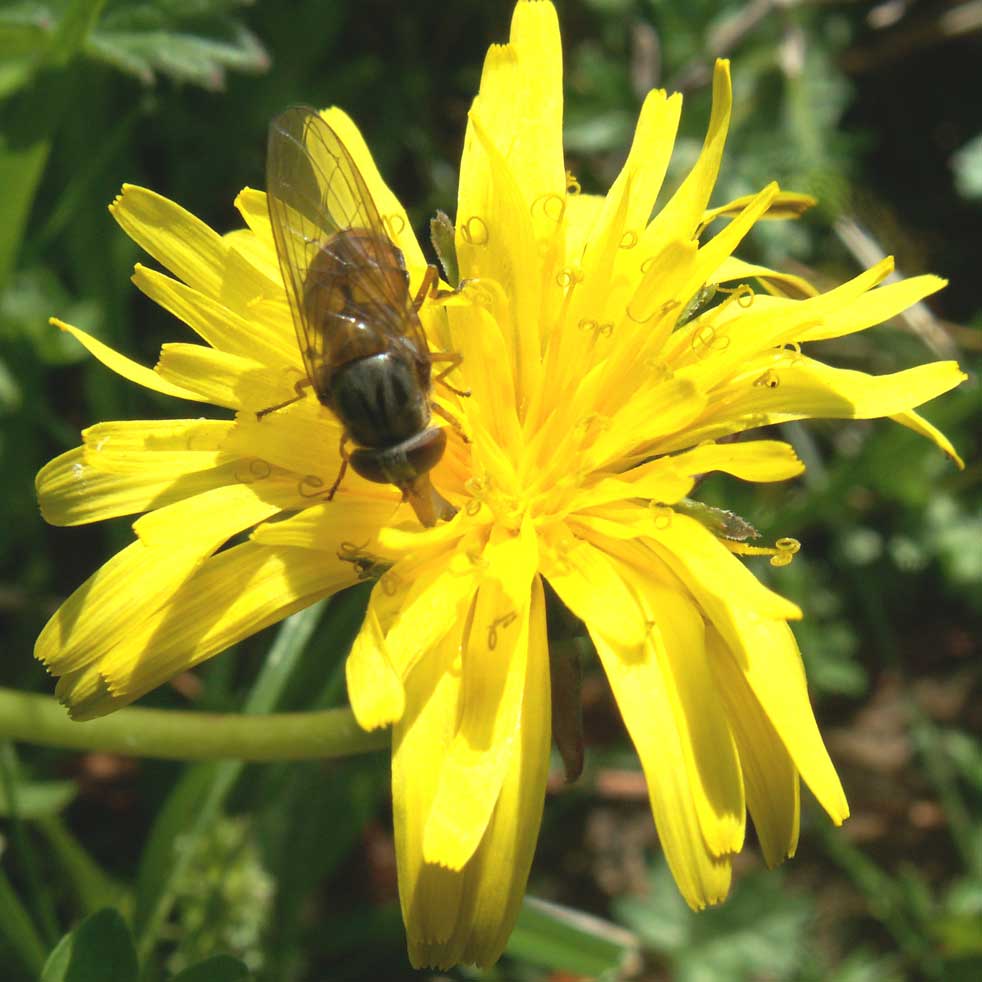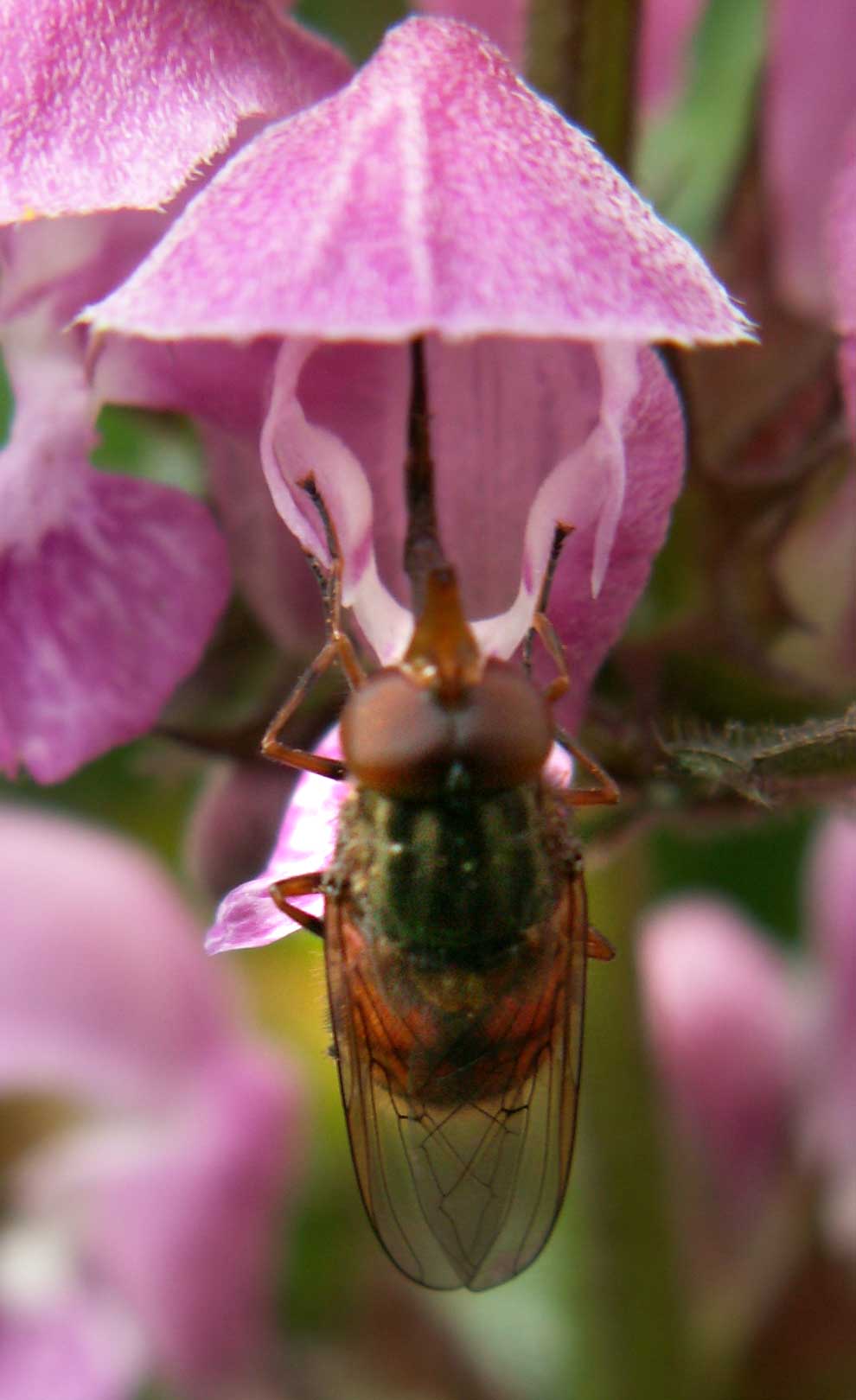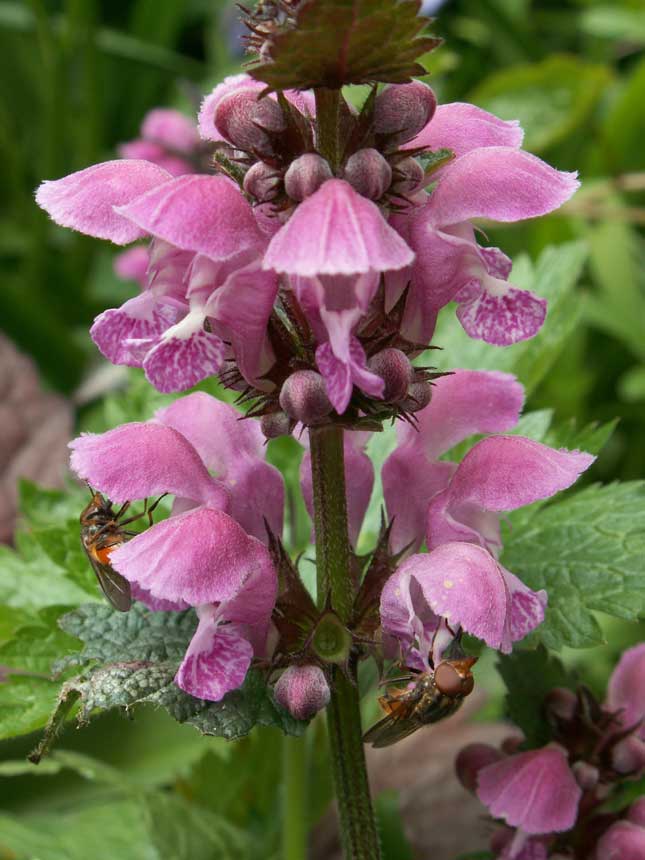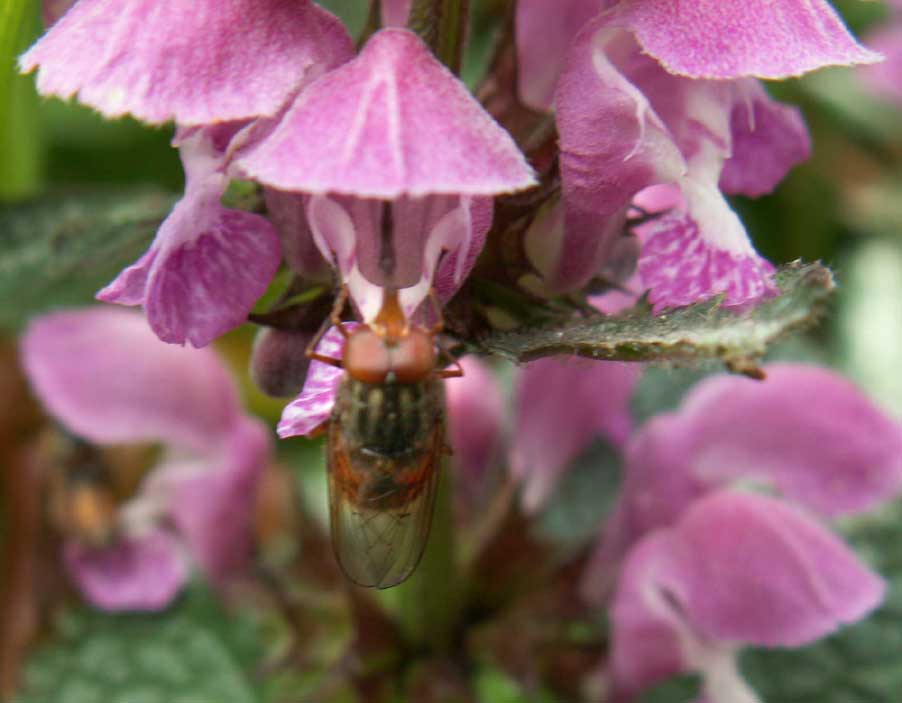
Rhingia campestris
The image on the right illustrates the long tongue. Count the legs if you are not sure.
 |
2
April 2006
Rhingia campestris The image on the right illustrates the long tongue. Count the legs if you are not sure. |
| 1
April 2006
About a dozen Rhingia campestris were noted on the lower slopes of Mill Hill, but there were probably many more than that. Hawkweeds were their flower of choice. Click on the first picture for a close-up. |
 |
 |
30
April 2006
 |
 |
The
photographic study shows the Rhingia
hoverflies
in the north Shoreham garden. The first one and three below show Rhingia
visiting the Spotted
Deadnettle, Lamium maculatum, and its
long tongue is visible.
 |
 |
 |
26
April 2006
 |
 |
 |
29
April 2005
The
two following species are thought most likely to be hoverflies.
 |
 |
 |
The
first one was discovered on Green Alkanet
at
the southern end of the Waterworks Road.
The upturned snout indicates a species of Rhingia
although
this protuberance (elongated face) would seem more suitable for feeding
on the prevalent White Dead-nettle
rather than the plant it was on.
Rhingia
campestris for comparison (Link)
Comparison
photo of R. campestris and R. rostrata (Link to photographs
by Nigel Jones)
The
lateral margins of the tergites (dorsal segments) are edged
in black in R. campestris, this
is clearly visible on the image posted. R. rostrata lacks this feature.
Source.
The second smaller brown fly (above right photograph) was ubiquitous on wasteland like the Dovecote Bank.